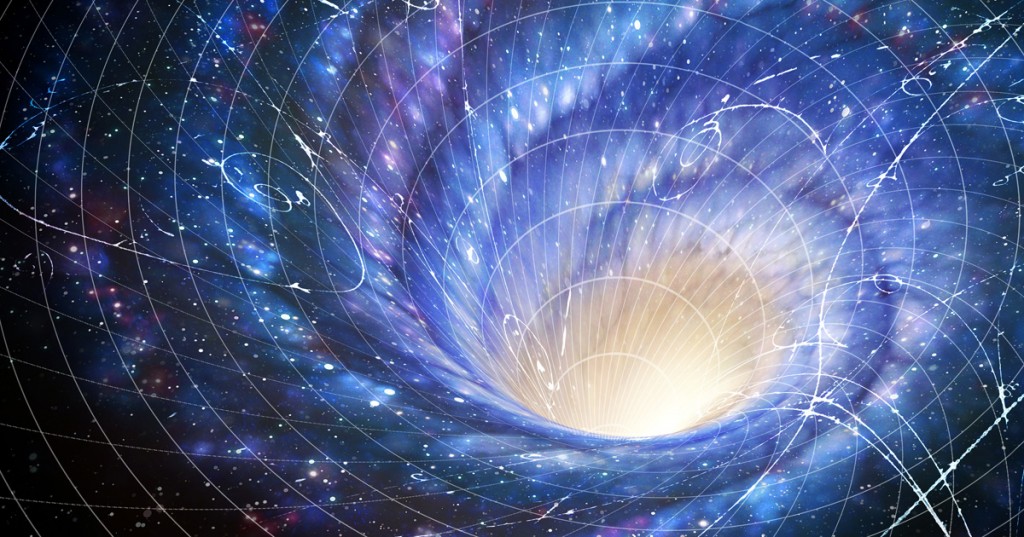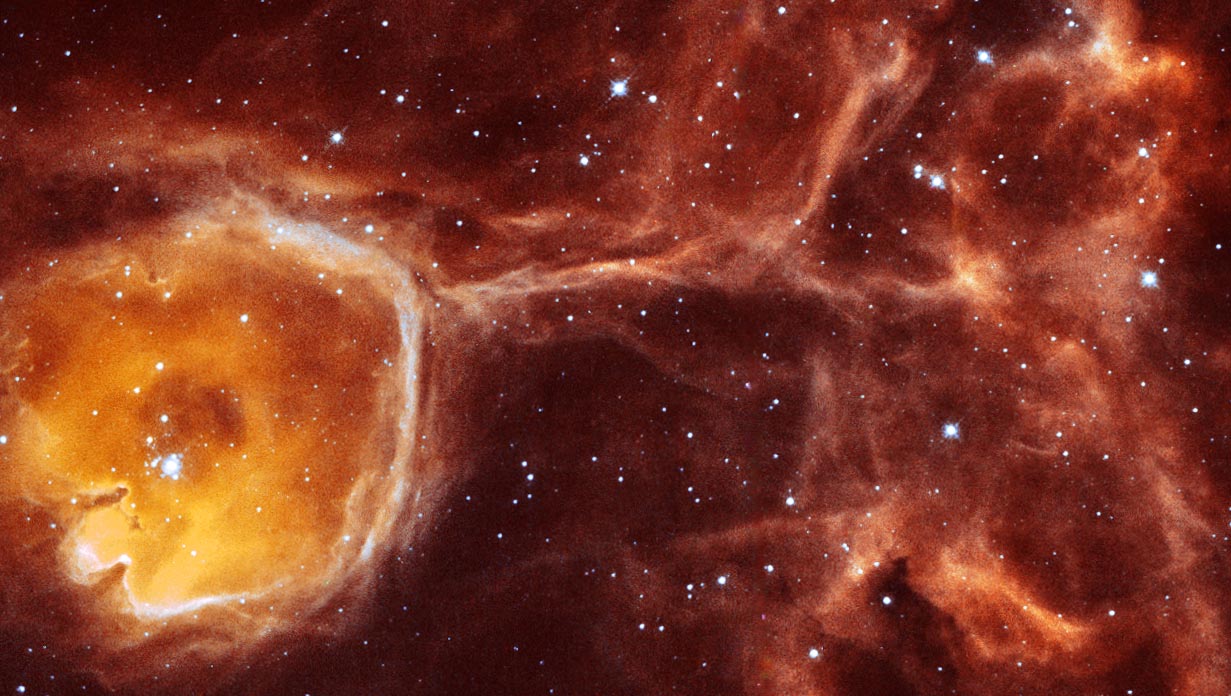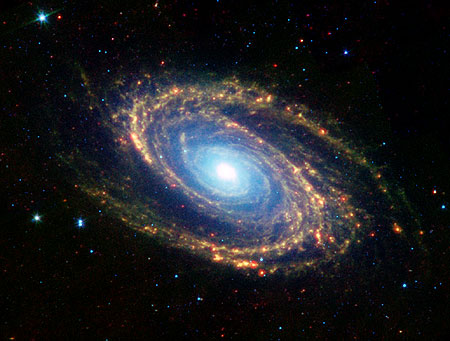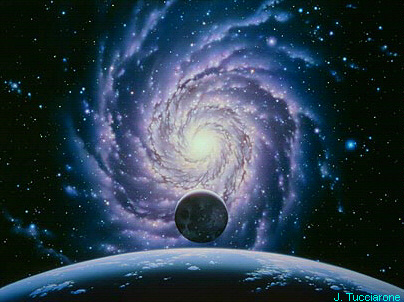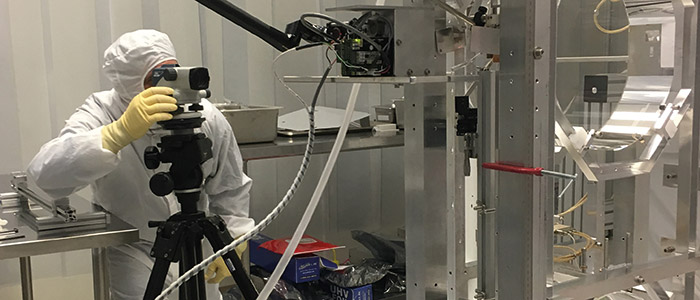Astrophysics
Astrophysics (from Greek ἄστρον Astron "star" and φυσισ physis "nature" ) is concerned with the physical principles of exploration of celestial phenomena and is a branch of astronomy. As an extension of classical astronomy (mainly from astrometry and celestial mechanics made ) it now makes up large areas of astronomical research.
History
Origin
Many historians date the beginning of the fusion of astronomy and physics at the beginning of the 17th century, more precisely, on the discovery of Kepler 's laws. One of the first was obviously convinced that Johannes Kepler was the first astrophysicist, was his longtime mentor and friend Michael Maestlin. In a letter to Kepler, he wrote: "I think you should leave out of consideration physical causes, and should try astronomical matters only after the astronomical method using astronomical, not physical, to explain causes and hypotheses. That is, the calculations require astronomical basis in the field of geometry and arithmetic ".
Both Kepler and Galileo Galilei have considered the work of William Gilbert, a physician and physicist in England in the 17th century. Gilbert differed first clear distinction between magnetism and static electricity, he examined the electrical charge of many substances, and he was convinced that the Earth must be considered collectively as a single magnet with two poles. After his presentation of magnetism was the " soul " of the earth - from which he developed a whole "magnetic philosophy." Many scientists of the time the discoveries of Kepler, Galileo, and Gilbert, however, were not taken seriously. This led to a neglect of their work and ultimately to the fact that even should another two centuries pass before the alchemical views were abandoned.
The actual birth of astrophysics is now specified by many scientists with the confirmation of the Copernican world view by Friedrich Wilhelm Bessel and Thomas James Henderson and Friedrich Georg Wilhelm Struve in 1838 by the first measurements to trigonometric stellar parallaxes. The stellar photometry, ie the measurement of the apparent brightness of the stars, and its developed almost parallel spectrum analysis by Joseph von Fraunhofer, Gustav Robert Kirchhoff and Robert Wilhelm Bunsen also formed part of the basis of that science which is known as astrophysics today. Already in 1814 the Fraunhofer discovered dark lines in the spectrum of the sun, the Fraunhofer lines, without being able to explain their origin.
"The real astrophysics, that is, the study of the stars with physical methods, began when 1859 G. Kirchhoff and Bunsen G. spectrum analysis and the interpretation of the Fraunhofer lines in the solar spectrum discovered in Heidelberg. "
"Already in 1860 formulated G.Kichhoff the basics of radiation theory, in particular the Kirchhoff 's theorem, which defines the relationships between emission and absorption of radiation in thermodynamic equilibrium. This theorem together with the Doppler's principle formed forty years the whole mindset for Astrophysics. "
Further development
The findings of Kirchhoff and Bunsen led finally to an immediate application of newly acquired technologies by astronomers in the mid-19th century. Already in 1863 were published by Angelo Secchi studies based on the findings of Kirchhoff and Bunsen. Even today, two very well-known astronomer whose studies participated in and published in this period pioneering work on the subject of astrophysics: Lewis Morris Rutherfurd of New York, and William Huggins from London. During a solar eclipse in India on August 18, 1868 Pierre Janssen discovered in the solar corona using the chemical monitoring by spectral analysis of a (then) not yet known element: Helium.
Many well-known scientists sat down in the next few years with substantial basic research in physics apart and thus contributed interdisciplinary basic research for today's existing astrophysics. In his book, On the conservation of force ( 1847) Hermann von Helmholtz formulated the conservation of energy in more detail than Julius Robert von Mayer had done it in 1842, and contributed significantly to the recognition of this principle in initially very controversial. Thus Helmholtz provided the principles for the gravitational energy. Antoine Henri Becquerel, who discovered radioactivity in 1896 laid the foundation for the measurement of the decay of isotopes. George Howard Darwin, son of Charles Darwin, examined in 1882 the effect of the tides on the solar system with mathematical methods and became a recognized expert in this field. John Joly suggested in 1899 described a method to determine the age of the earth from the sodium content of the oceans, from the idea that its concentration would increase steadily through erosion on land. He estimated the age of the earth then to 80 to 100 million years. In 1903, he suggested a better method to estimate the geological era from the radioactive decay of radium ( in a Nature article ). 1907 Bertram Boltwood measure the age of rocks by the radioactive decay of uranium to lead ( uranium - lead dating ).
Classical partial areas
- Physical cosmology ( cosmology, origins of the universe)
- Formation and evolution of stars
- Solar Physics
- Astroparticle Physics
- Cosmochemistry ( chemical evolution of elements) and nucleosynthesis
- Gravitational dynamics ( formation and evolution of galaxies)
- Black Holes
- Neutron stars
- Formation and evolution of planetary systems ( exoplanets Planemos, brown dwarfs )
Theoretical Astrophysics
The Theoretical Astrophysics tries to predict or simulate celestial phenomena through models. Many astrophysical processes can be described by partial differential equations, for which only in exceptional situations, an exact analytical solution can be found. A widely used method in astrophysics are therefore numerical calculations ( numerical ) and simulations (2008) would take days to weeks with a standard PC. In practice, therefore, is often resorted to supercomputers or clusters. The results thus obtained are compared with observations and checks whether they match.
Observational Astrophysics
Most important method is the spectral analysis of electromagnetic radiation, which extends the observation area of radio waves (radio astronomy ) to high -energy gamma rays over about 20 orders of magnitude. From Earth, the frequency ranges of radio waves and some parts of the infrared region can be observed except visible light. Most of the infrared light, ultraviolet light, and X-rays and gamma radiation can be observed only from satellites as the atmosphere acts as a filter.
To classify stars according to spectral and luminosity classes, they can be entered in a Hertzsprung -Russell diagram (HRD ). The location in the HRD defines almost all of the physical properties of the star.
For the distance determination you can use the color-magnitude diagram ( FHD ).
In addition to individual stars, especially galaxies and galaxy clusters are observed. For this purpose, ground-based telescopes - often connected together to form clusters - such as HEGRA and used space telescopes such as the Hubble Space Telescope. Often with satellite detectors and telescopes are started. In addition, an astrophysicist also interested in the cosmic background radiation.
Laboratory Astrophysics
For a long time knew the astrophysics as well as no laboratory experiments. However, the development of powerful new telescopes from the turn of the century ultimately led to the emergence of the sub- area of laboratory astrophysics. This produced and studied as yet unknown molecules. On the basis of spectrograms obtained in the laboratory and using large radio telescopes, these molecules can be detected in interstellar gas clouds. This in turn can infer chemical processes that take place there at about star birth. Laboratory Astrophysics research groups worldwide there are only about 20 in Germany at the University of Kassel, the Friedrich -Schiller- University of Jena and University of Cologne. Furthermore, there are laboratories that deal with the formation of planets, such as the University of Braunschweig and the University of Duisburg -Essen. Next simulations computers collision and growth of dust particles where a number of laboratory experiments carried out, which are then continued including in microgravity.
Relation to other branches of physics
The accuracy that is achieved at about measurements in nuclear physics, is systematically excluded in astrophysics. Interference effects can hardly be avoided. Despite this fundamental difference to all other sub-disciplines of physics astrophysicist use methods and principles from other areas of physics, especially from the Nuclear and Particle Physics ( detectors for the measurement of certain particles of certain energies about ). In theoretical astrophysics, however, the basis of plasma physics is especially close, as can be described as plasmas many astronomical phenomena such as stellar atmospheres or clouds of matter in good approximation.



